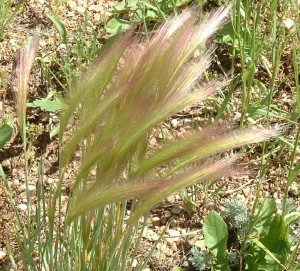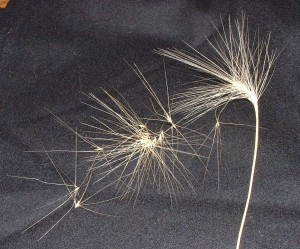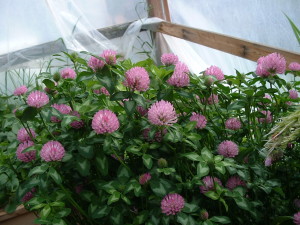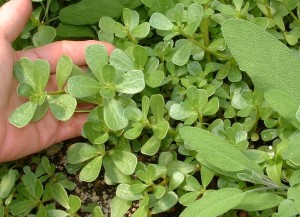Purslane
Portulaca oleracea.
Purslane, a plant that mysteriously finds its way into many gardens and sidewalk cracks is yet another nutritious superfood given freely by Mother Nature that has been designated a “weed”. A low lying crawler with plump succulent leaves, purslane, AKA pigweed is rich in omega 3 essential fatty acids. Perhaps one of the richest of all leafy greens. Maintaining a good balance of essential fatty acids aids in cognitive thought, keeps your joints juicy as well as assisting with inflammation of all kinds. Most Americans’ diets have far too much omega 6 fatty acids and most Americans suffer from inflammation of one kind or another. Maintaining a good balance of essential fatty acids is crucial for managing inflammation. It’s time for an oil change America and purslane can be of assistance simply by adding it to your meals.
Eaten raw, purslane is rich in Vitamin A, which is important for good vision, it has antioxidant properties, provides dietary fiber, and is rich in minerals such as calcium, magnesium and potassium. Low in calories but high in nutrition, it just doesn’t get any better than that. Per 43 gram serving, purslane has 7 calories, 28 mg of calcium, 29 mg of magnesium and 212 mg of potassium.
See more here:
http://nutritiondata.self.com/facts/vegetables-and-vegetable-products/2604/2
The young shoots are juicy with a mild tangy flavor. A pleasant addition to any salad, I include it in my wild food salad mix. The older shoots can be added to soups as a vegetable or stir fried and the thick stems can be pickled in salt & vinegar to be eaten later in the year when green foods are unavailable. Moist and cooling is the energy of the plant and would make an excellent poultice when freshly juiced for burns, sunburns or any hot condition such as gout.
Per Maude Grieves book The Modern Herbal, “The juice with oil of roses was recommended for sore mouths and swollen gums and also to fasten loose teeth.”
Foxtail Barley Grass Hordeum jubatum
 Although you will rarely find me speaking badly of a plant, there is always that one. Currently lining nearly every roadside I’ve traveled in July, foxtail barley looks beautiful as it gently sways in the wind. Some people add it to their gardens as an ornamental grass it’s so aesthetically pleasing. Early on it is completely harmless but as it gets older it undergoes a complete personality change. Foxtail barley becomes foxtail gnarly.
Although you will rarely find me speaking badly of a plant, there is always that one. Currently lining nearly every roadside I’ve traveled in July, foxtail barley looks beautiful as it gently sways in the wind. Some people add it to their gardens as an ornamental grass it’s so aesthetically pleasing. Early on it is completely harmless but as it gets older it undergoes a complete personality change. Foxtail barley becomes foxtail gnarly.
 The awns spread out as it ages and each one has small barbs invisible to the naked eye that can cause serious injury to grazing animals eyes, nose, gums, throat and ears. If the awns work their way into the digestive tract, it can even cause death. The Navajo thought it could kill a man if he were to get an awn in his mouth.
The awns spread out as it ages and each one has small barbs invisible to the naked eye that can cause serious injury to grazing animals eyes, nose, gums, throat and ears. If the awns work their way into the digestive tract, it can even cause death. The Navajo thought it could kill a man if he were to get an awn in his mouth.
Indigenous to the western United States, its primary means of reproduction is by seed. Foxtail is a perennial in the bunch grass family that is typically controlled through the use of herbicides. Because it is pretty and harmless in its beginning phase of growth, I say just cut the tops off before they mature and become wicked awns with barbs. Be sure to dispose of them in a trash receptacle because they will still fan out after picking. It can also be easily pulled out as the roots are shallow. Foxtail can germinate in the fall or the spring and attach to animals fur for further distribution. It’s definitely a hitchhiker and can lower the value of sheep’s wool. It also frequents meadows such as hay meadows and can render the hay useless when contaminated with it. This is a local that definitely gets around.
Meet the pea family
Clovers
Many of the beautiful wildflowers that are so abundant this year are members of the Legume or pea family. The sea of yellow flowers that line the roadsides is called yellow clover or sweet clover and make excellent forage for livestock. Clovers also produce high quality nectar for the bees. Sweet clover contains quercetin which is helpful in strengthening weak capillaries.
Red clover and white clover also grow wild in Colorado and are edible, highly nutritious and rich in protein. The young leaves can be gathered before flowering and eaten raw in salads or on sandwiches, boiled or steamed as a vegetable or stir fried. Clovers should be eaten in moderation however as they can be difficult to digest and cause bloating in man and animal although cooking can help counteract this effect. The dried flowers and seed heads can be ground into flour for making bread.
 Red clover has long been used as a blood purifier removing toxins from the blood and is included in my detox tea blend as well as my wild food salad mix. It contains compounds that are both estrogenic and cancer preventative. Clovers also improve the soil by increasing the nitrogen content. For this reason and more the clovers are allowed to grow freely in my greenhouse.
Red clover has long been used as a blood purifier removing toxins from the blood and is included in my detox tea blend as well as my wild food salad mix. It contains compounds that are both estrogenic and cancer preventative. Clovers also improve the soil by increasing the nitrogen content. For this reason and more the clovers are allowed to grow freely in my greenhouse.
Warning: Clovers contain coumarin or compounds related to coumarin, (blood thinning compounds). If these plants are allowed to mold their coumarin can become dicoumarol and cause uncontrollable bleeding. In fact, I was recently informed by someone that the pharmaceutical blood thinner Warfarin which is derived from plant coumarins doubles as rat poison causing the animal to bleed to death.
Locoweed
Another beautiful but not so nice member of the pea family is locoweed. Locoweed comes in an assortment of colors and is despised by most livestock owners. Being poisonous to horses, sheep and cattle, this plant contains toxic alkaloids that eaten over a period of time can cause a disease called locoism that mainly affects the nervous system of the animal. Locoweed can cause a whole range of problems from heart disease, fluid retention, miscarriages and can even result in death. Best to just admire this one for its beauty and keep it far away from the livestock.
Mari Marques is a Certified Herbalist and owner of The Thymekeeper. For questions or more information contact: Mari at mugsyspad@aol.com or 719-439-7303. Mari is available for private consultation or to meet with you and see what’s blooming on your property in August. We will be participating in the farmers market at the Outpost Feed and Ranch Supply store Friday afternoons from 11:00-4:00 weather permitting.
August 8th, 9th & 10th from 1:00-3:30 we’ll be leading herb walks on National Forest land. We’ll meet at 1870 County Road 31 in Florissant and carpool or drive to the site. Come prepared with good shoes, enough water, snacks, rain gear and bug repellent. These walks are funded by donation. Pre-register with Mari at mugsyspad@aol.com

Leave a Reply